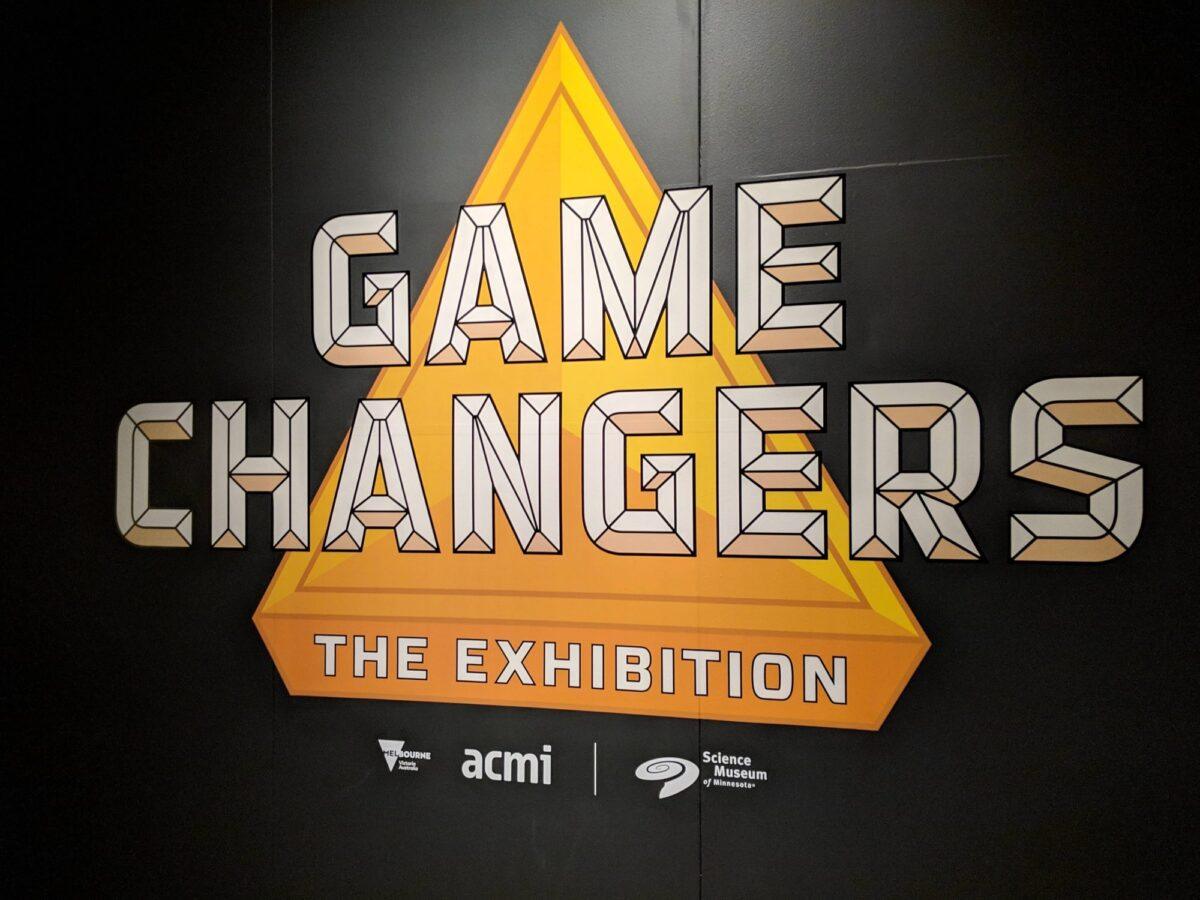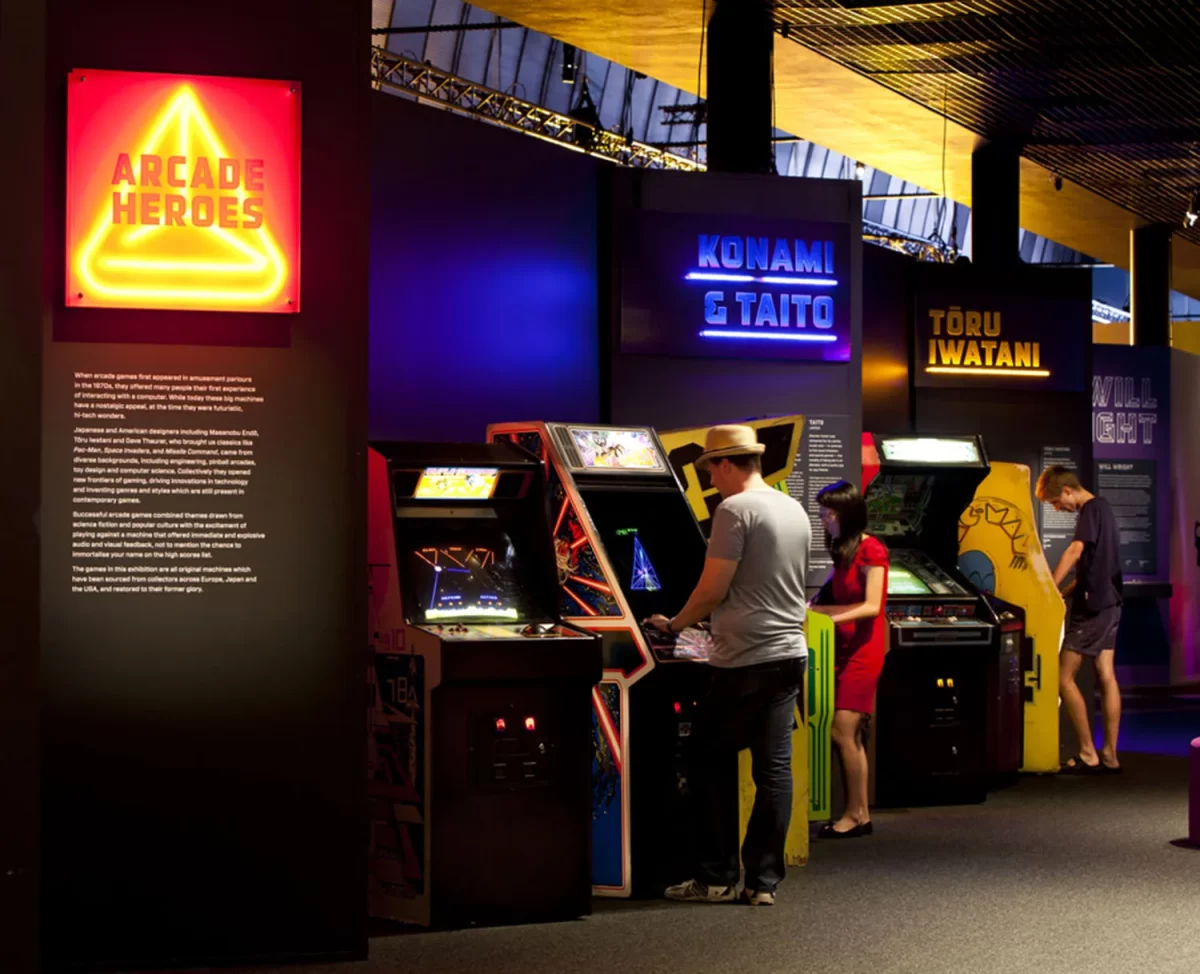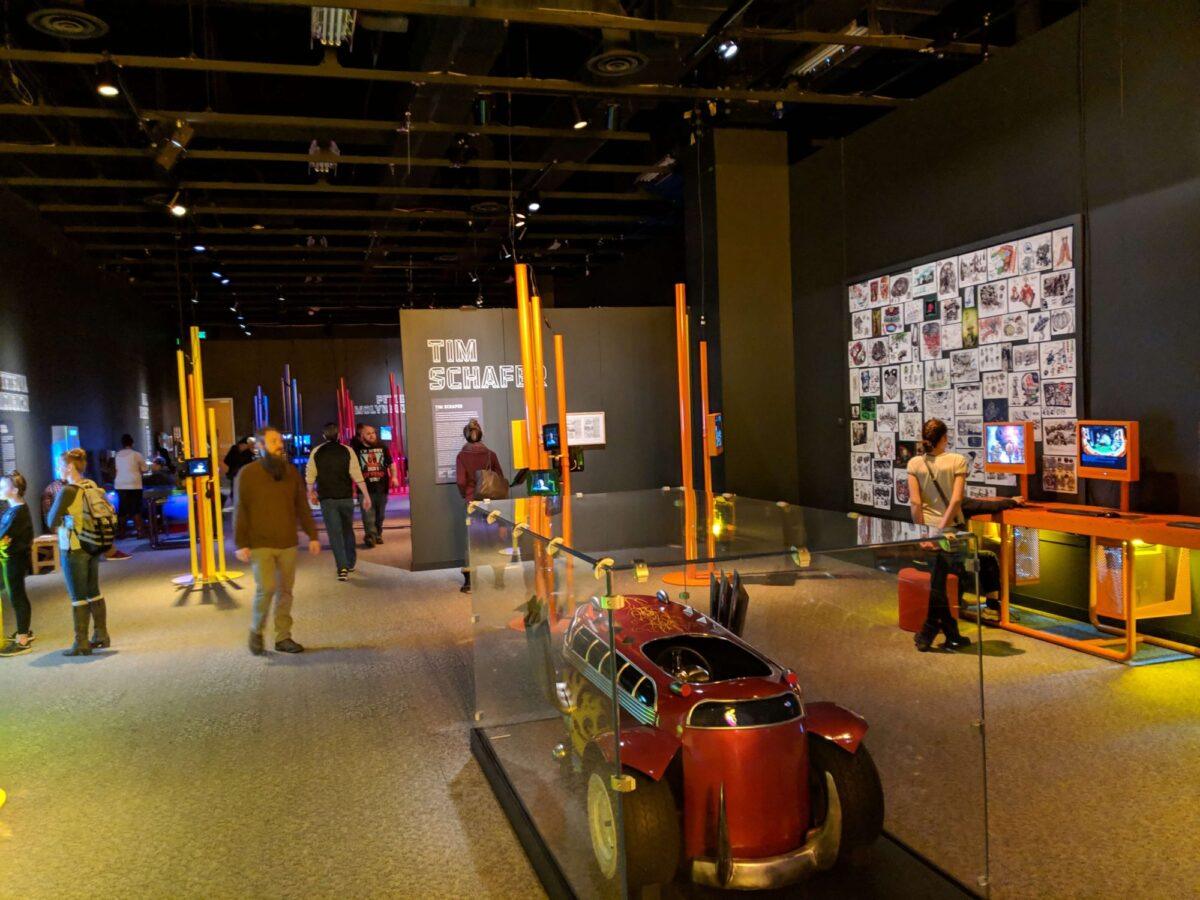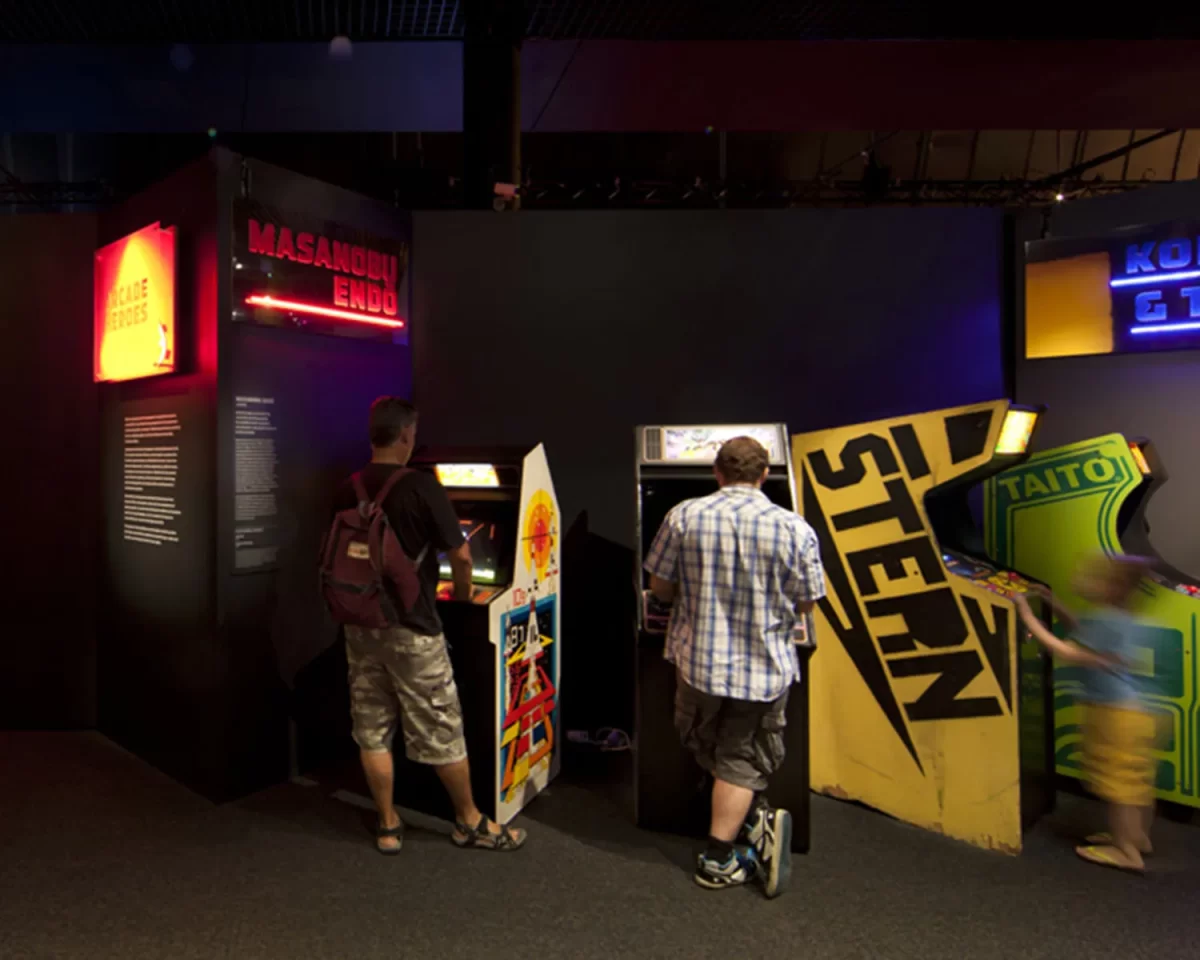The Science Museum of Minnesota has transformed its US Bank Great Hall into a 10,000-square-foot educational video game experience. Game Changers, the museum’s newest exhibit, takes a hands-on look at some of video games’ most important and groundbreaking creations and the minds that spawned them. Visitors can learn about the creators of some of the industry’s most influential characters, concepts, and ideas, all while having a chance to play a wide variety of games that span the vast history of the medium. And the best part is that you don’t need to bring your quarters.

The exhibit itself comprises three different sections: “Arcade Heroes,” “Game Changers,” and “Indies.” Each section offers a wide variety of educational material about the games featured within and their creators, including concept art, interviews, and playable demos of the games themselves.
The first section of the exhibit is “Arcade Heroes,” which details many designers from the early stages of gaming’s most important period. Toru Iwatani (Pac-Man, 1980); Tomohiro Nishikado (Space Invaders, 1978); and Shigeru Miyamoto (Donkey Kong, 1981) are some of the most recognizable names. Each designer feature includes a description of the individual as well as the game that made them famous, displayed next to an authentic arcade cabinet of the game itself. Well-known games such as Pac-Man and Asteroids are featured next to lesser-known titles such as Defender and Tempest.
While this section of the exhibit was the most hands-on, it also the most competition to interact with it—not surprisingly, the free arcade cabinets featuring some of arcades’ most well-known games were the most popular part of the entire exhibit. Games like Pac-Man and Donkey Kong usually had a few people in line waiting to play them, while even lesser-known games, such as Missile Command, were perpetually in use. “Arcade Heroes” has a lot of interesting information and classic games to play, but if you want to experience everything it has to offer you should be prepared to wait.

Once you finish with “Arcade Heroes” you move on into the bulk of the exhibit itself, the titular “Game Changers” section. “Game Changers” features the broadest selection of games across what seems to be the entirety of gaming history, broken down into smaller sections showcasing designers and their game studios. Each subsection of “Game Changers” features interviews with game designers, concept art of famous characters, and hands-on demos of the games they created. Designers like Peter Molyneux (Fable III, 2010); Yuji Naka and the Sonic Team (Sonic the Hedgehog, 1991); and Tim Schafer (Broken Age, 2014) are all featured prominently, with a wide variety of media showcasing their most popular games and the behind-the-scenes processes needed to bring them to life.
Understandably, this section is the meat and potatoes of the entire exhibit and is given the most room to feature a wide variety of talented designers and studios behind some of gaming’s most recognizable creations. But unlike in “Arcade Heroes,” most games featured in “Game Changers” don’t lend themselves to short bursts of gameplay, allowing you to experience all they have to offer and move on. Games like LEGO Harry Potter and Shadow of the Colossus are interesting choices to feature playable demos, as they can take hours to experience what makes them special or important to gaming as a whole. The lack of cohesive connective tissue hindered my experience with this section of the exhibit, as it felt like I was wandering aimlessly with no real reasoning as to why certain developers were featured next to one another. This was definitely the most informative part of “Game Changers” as a whole, but it could have used a better narrative to show the breakthroughs of each studio rather than just showcasing them.

The final section of the exhibit is simply titled “Indies,” and features many of the most famous recent video games that started as releases from independent developers or studios. Designers such as Markus “Notch” Persson (Minecraft, 2011); Rovio (Angry Birds, 2009); and The Behemoth (Castle Crashers, 2008) feature prominently as developers that overcame the limitations of being released independently to achieve worldwide recognition and acclaim. Much like the “Game Changers” section, “Indies” features interviews and concept art from games such as Alien Hominid, Braid, and Journey, with playable demos of popular games such as Minecraft and Fruit Ninja.
Unlike “Game Changers,” this section’s umbrella categorization of being indie games helps the entire section feel unified and cohesive. You may still have a problem finding a chance to play some of the games, especially Minecraft, but it definitely gives you a good chance to learn more about and try some smaller-developed games you may have heard of but never gotten a chance to play.

All in all, Game Changers can be a great learning experience, with just enough interactivity to keep video game enthusiasts across the board entertained. The main section of the exhibit may lack a certain cohesion that could prevent you from seeing everything it has to offer, but it does a great job detailing a large portion of the developers who have worked hard to make gaming into what it is today. But you should temper your expectation before going, just in case. At its heart, Game Changers is a museum exhibit that features playable video game demos, not a vast free arcade that may also teach you something every now and then. Expect to spend a lot of time with Game Changers and you will get the most out of what it has to offer. You may not need to bring your quarters, but be sure to bring your patience.
Game Changers runs until May 5, 2019, at the Science Museum of Minnesota in St. Paul. Admission into the exhibit is included with regular Science Museum admission.
*Originally posted on Twin Cities Geek on March 15th 2019*
